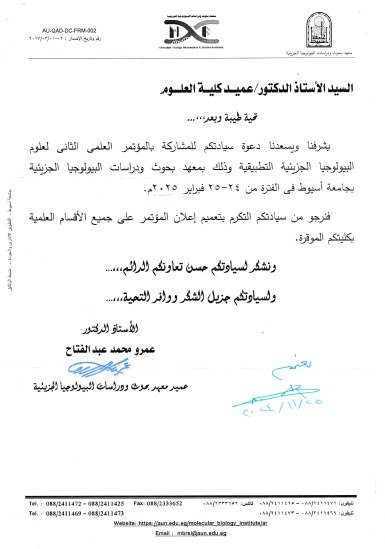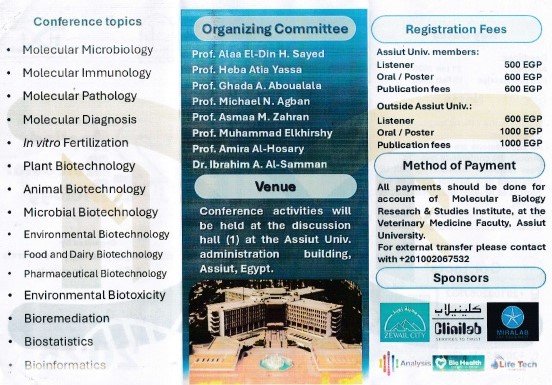


The production of formaldehyde (FA) and clean hydrogen gas via the non-oxidative dehydrogenation of methanol is seen to be a promising approach where the anhydrous formaldehyde is an ideal for using in the subsequent manufacture of oxygenated synthetic fuels. In this investigation, NiMoO4 with nanoaggregates morphology was synthesized by hydrothermal method in presence of triethylamine (TEA) as a surfactant and tested for the non-oxidative catalytic dehydrogenation of methanol into formaldehyde at relatively low temperature. Structural, morphological and textural properties were characterized by TGA, DSC, XPS, XRD, FT-IR, HR-TEM, pyridine-TPD and N2-sorption assessments. Results of XRD verified the coexistence of mixed phases of both α and β-NiMoO4. The catalysts' texture, structure, acidity and catalytic activity were greatly influenced by the introduction and the molar ratio of TEA. The variation of catalytic activity is strongly associated to the variation in SBET and acidity. Activity results revealed that catalyst with Ni:TEA ratio of 1:1 (N1T1) was the most active catalyst with methanol conversion of 96% and selectivity to FA of 95% at reaction temperature of 325°C. The outstanding catalytic performance of this catalyst is due to the presence of weak and intermediate strength Brønsted acidic sites on its surface. This catalyst showed remarkable stability for the synthesis of anhydrous formaldehyde over a 160 h period while maintaining the same conversion and selectivity.
In Egypt, the distribution of black sand in various coastal regions has been readily apparent by thorough research. Unfortunately, these investigations did not measure radioactivity in black sand, particularly in the vicinity of the Red Sea. Gamma-ray spectroscopy was used to detect the naturally occurring radioactivity from 238U, 232Th, 40K, and 226Ra in black sand samples from eight locations along the Red Sea coast: Ras Elbehar, Gemsa, Hurghada Elahiaa, Hurghada Titanic, Safaga, Qusier Elsharm Alqbly, Gabal Alrosass, and Marsa Alam. The resultant data were interpolated to represent the spatial distribution. Additionally, the potential rocks sources of radionuclides were geologically mapped to elucidate the relationship between rock components and radioactivity. The results showed that 226Ra, 232Th and238U were higher at samples collected from Ras Elbehar, Hurghada Elahiaa and Hurghada Titanic compared to the other sites. On the other hand, 40K showed the lowest mean value (75.3 ± 3.8 Bq/kg) in Hurghada Titanic samples, while it peaked (563 ± 28 Bq/kg) in Qusier Elsharm Alqbly samples. The interpolated results show notable differences in radioactive amounts between the north and south, which are indicative of several environmental conditions and human activities. Alkaline syenite, syenogranite, older granites (tonalite and granodiorite), and minor acidic volcanic/metavolcanic rocks make up the upstream area of the basin area draining into, for example, the Ras Elbehar locality (highest activity concentrations for 238U (1596 ± 80 Bq/kg) and 226Ra (886 ± 44 Bq/kg)), while alkali-feldspar granite, schist, and shale rocks make up the mid-stream area. The findings provide a basis for scientific forecasting on the impact of synthetic or naturally occurring radioactive isotopes introduced into aquatic environments.
Interest in sustainable nitrogen fertilizer production using plasma technology is rapidly growing, and this method is a promising way to decentralize fertilizer synthesis and achieve carbon-free production. However, improving efficiency remains a major challenge for the industrial application of this technology. Herein, we present comprehensive experiments using spark discharge to pinpoint the key factors affecting the efficiency of this process and provide technical approaches to improve the energy usage. We found that applying a bipolar voltage at high frequencies greatly benefited the NOx yield and its efficiency via the utilization of residual species. Measurements using active cooling for the reactor and electrodes revealed that the chemical loss process was not significant, but the energy loss during the heating of the electrode was the dominant loss process, particularly at high frequencies (>20 kHz) where an anchor state of the spark was reached. However, the beneficial effects of higher frequencies compensated for and mitigated the higher power loss resulting in slowing the increase of the energy cost with the energy density. Moreover, enlarging the plasma zone (reaction channel) by increasing the electrode gap was an effective approach for enhancing the energy usage for the desired reaction. Further, the limitations of enlarging the gap were resolved by inserting a floating electrode in the large gap, yielding higher NOx production (1.8%–3.0%) at a lower energy cost (1.9–4.4 MJ/mol), and further enhancements could be achieved by optimizing the reactor configuration. Therefore, the results provide an important basis for the further development and optimization of plasma reactors for efficient chemical reactions.
Plasma-based NOx synthesis from ambient air is a promising sustainable technology for producing value-added chemicals, such as nitrogen fertilizer and medication. The relatively low efficiency and product selectivity are major concerns that hinder the commercialization of this technology. Despite advancements in reducing energy costs, limited attention has been paid to improving and controlling selectivity, which significantly contributes to the overall cost. Thus, the present study aimed to gain insights into the efficient pathways and key factors for highly selective NOx synthesis in a recently developed high-frequency spark discharge (HFSD) reactor. The thorough investigations conducted proved that the higher energy efficiency of HFSD is due to higher vibrational and rotational excitations and their efficient utilization. However, the significant impact of higher temperatures on reactions led to poor selectivity of NO and NO2. Therefore, the role of influential factors, such as O2 and H2O contents, as well as residence time, on reactions, were analyzed and optimized. It is found that controlling the oxygen content remarkably improved product selectivity but negatively affected the energy cost. Moreover, water vapor triggered the so-called extended Zeldovich mechanism, which was evident in N2/H2O, affecting NOx formation and selectivity. Interestingly, tuning the gas flow rate effectively controlled selectivity without sacrificing the energy cost. A high NO selectivity of 95% was achieved at an energy cost of 2.1 MJ/mol when a relatively high flow rate of 4 L/min was used.
The present study focused on the Permian to Jurassic sequence in the Northern Highlands
area, NW Jordan. The Permian to Jurassic sequence in this area is thick and deeply buried, consisting
mainly of carbonate intercalated with clastic shale. This study integrated various datasets, including
total organic carbon (TOC, wt%), Rock-Eval pyrolysis, visual kerogen examination, gross composition,
lipid biomarkers, vitrinite reflectance (VRo%), and bottom-hole temperature measurements. The
main aim was to investigate the source rock characteristics of these strata regarding organic richness,
kerogen type, depositional setting, thermal maturity, and hydrocarbon generation timing. The
Permian strata are poor to fair source rocks, primarily containing kerogen type (KT) III. They are
immature in the AJ-1 well and over-mature in the NH-2 well. The Upper Triassic strata are poor
source rocks in the NH-1 well and fair to marginally good source rocks in the NH-2 well, containing
highly mature terrestrial KT III. These strata are immature to early mature in the AJ-1 well and at
the peak oil window stage in the NH-2 well. The Jurassic strata are poor source rocks, dominated
by KT III and KT II-III. They are immature to early mature in the AJ-1 well and have reached the oil
window in the NH-2 well. Biomarker-related ratios indicate that the Upper Triassic oils and Jurassic
samples are source rocks that received mainly terrestrial organic input accumulated in shallow
marine environments under highly reducing conditions. These strata are composed mostly of clayrich
lithologies with evidence of deposition in hypersaline and/or stratified water columns. 1D basin
models revealed that the Upper Triassic strata reached the peak oil window from the Early Cretaceous
(~80 Ma) to the present day in the NH-1 well and from ~130 Ma (Early Cretaceous) to ~90 Ma (Late
Cretaceous) in the NH-2 well, with the late stage of hydrocarbon generation continuing from ~90 Ma
to the present time. The present-day transformation ratio equals 77% in the Upper Triassic source
rocks, suggesting that these rocks have expelled substantial volumes of hydrocarbons in the NH-2
well. To achieve future successful hydrocarbon discoveries in NW Jordan, accurate seismic studies
and further geochemical analyses are recommended to precisely define the migration pathways.
The Wadi Sirhan Basin in Jordan originated from the Arabian Platform and served as a stable shelf during the
Paleozoic era. The Lower Paleozoic-Eocene sequence in the Wadi Sirhan Basin contains numerous shales, found,
in ascending order the Upper Ordovician Dubeidib, Lower Silurian Mudawwara, Maastrichtian Ghareb, Paleocene
Taqiyeh, and Eocene Sara fms. These strata warrant investigation of their source-rock potential and hydrocarbon
generation modeling, to precisely elucidate the timing of petroleum generation. To achieve this,
datasets were utilized from various analytical approaches, including Rock-Eval pyrolysis, visual kerogen analysis,
pyrolysis-GC, and lipid biomarker geochemistry. The aim of this study is to assess these source rocks regarding
organic matter quantity and quality, paleoenvironmental implications, thermal maturity, and petroleum generation
depth/time. The Lower Paleozoic Dubeidib and Mudawwara shales are identified as effective source
rocks, containing kerogen types II, II-III, and III. A high proportion of well-preserved, weakly fluorescent
amorphous organic matter suggests an origin from marine plankton-derived alginite in an oxygen-deficient
setting. These formations reached the peak oil window during the Devonian (~405-380 Ma) and Carboniferous
(~320-300 Ma). The Dubeidib Fm experienced late-stage oil generation during the Early Triassic (~255-
250 Ma), with a transformation ratio (TR) of 68%. The Ghareb Fm predominantly contains type II kerogen, while
the Taqiyeh and Sara fms mainly contain type I kerogen with minor type II kerogen. Thermal maturity assessments
using integrated parameters indicate that the Dubeidib and Mudawwara shales have entered the main
phase of hydrocarbon generation, while the Ghareb, Taqiyeh, and Sara shales remain immature. Furthermore,
analysis of biomarker ratios reveals the dominance of marine over terrestrial organic matter in the studied strata.
These clay-rich sediments were deposited under reducing conditions, which further facilitated the rearrangement
of steranes into diasteranes. The modeled TRs indicate the generation and subsequent expulsion of hydrocarbons,
but the absence of suitable reservoirs and/or improper trapping system, owing to the major Hercynian unconformity,
led to an incomplete petroleum system in the basin. Additional investigation is required to evaluate the
potential of the Early Paleozoic shales as subsurface unconventional resources, considering parameters such as
brittleness index and hydraulic fracturing. This study holds important implications for future hydrocarbon
exploration and development in the Wadi Sirhan Basin. The insights gained from such investigations could help
mitigate the risk of petroleum exploration failures in the Wadi Sirhan Basin, guiding future exploration and
development efforts towards promising approaches.

